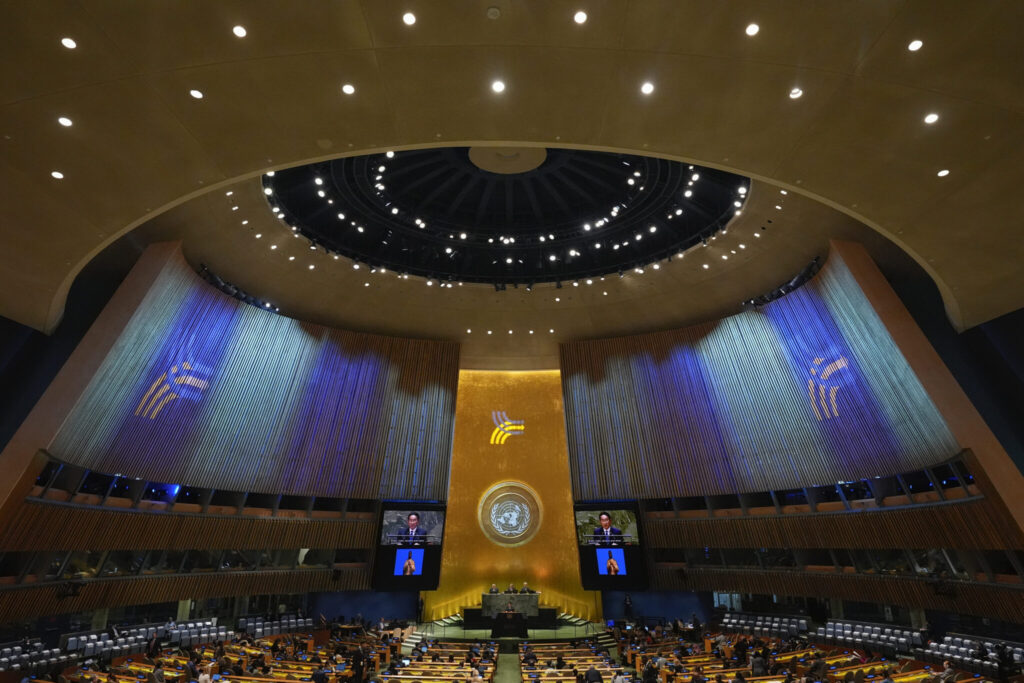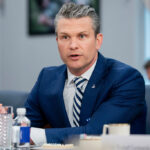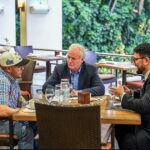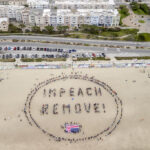UN future pact/ global pact for the future/ UN global challenges/ Newslooks/ NEW YORK/ UNITED NATIONS/ J. Mansour/ Morning Edition/ The U.N. General Assembly has endorsed a “Pact for the Future” aimed at addressing critical global challenges like climate change, artificial intelligence, and inequality. U.N. Secretary-General Antonio Guterres urged world leaders to turn promises into action. Despite objections from Russia, the 193 member nations reached a consensus on the pact.
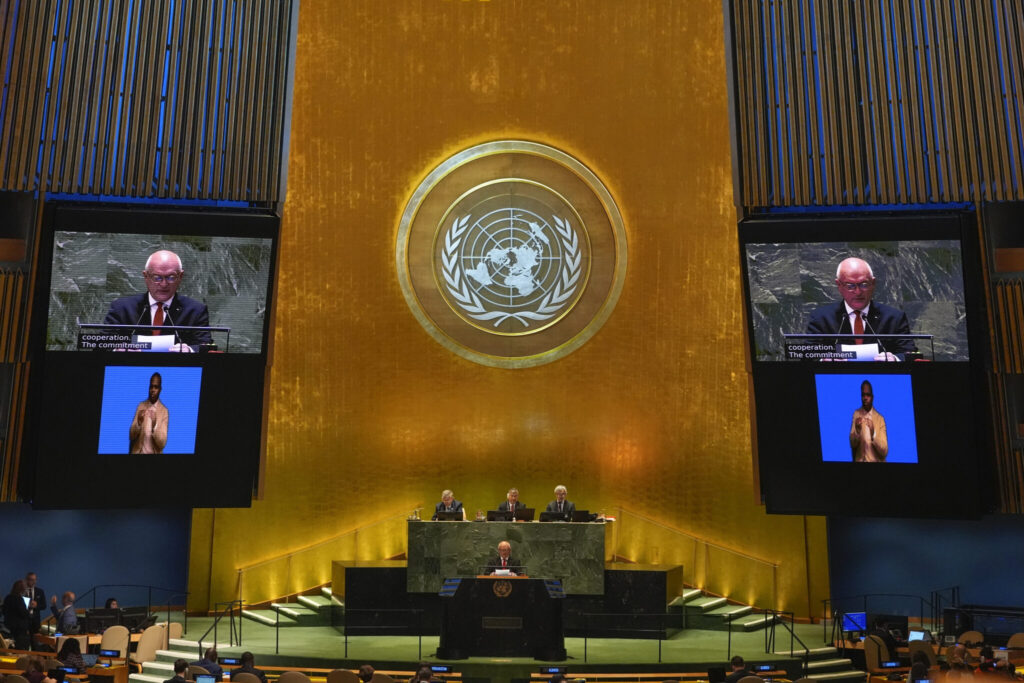
UN Nations Endorse ‘Pact for the Future’: Quick Look
- U.N. nations adopted the 42-page “Pact for the Future,” a blueprint to address major global challenges, from climate change to AI.
- U.N. Secretary-General Antonio Guterres called on leaders to turn agreements into action and resolve global conflicts.
- Russia proposed amendments to weaken the pact, but they were rejected by the majority, including African nations.
- The pact includes provisions on Security Council reform, nuclear disarmament, and the global governance of AI.
- Guterres emphasized the need to address inequality and include youth in decision-making processes.
UN Nations Endorse ‘Pact for the Future’ to Tackle Global Challenges
Deep Look
The United Nations General Assembly endorsed the “Pact for the Future,” a comprehensive blueprint aimed at uniting nations to address some of the most pressing issues of the 21st century. From combating climate change to regulating artificial intelligence, the 42-page document lays out a vision for a more collaborative, just, and secure world. While the agreement reflects the U.N.’s commitment to global cooperation, U.N. Secretary-General Antonio Guterres emphasized that words alone are not enough.
At the opening of the two-day “Summit of the Future,” Guterres praised world leaders for adopting the pact but cautioned that true success will depend on action. “We are here to bring multilateralism back from the brink,” he said. “It is our common destiny to walk through this door to a better future. That demands not just agreement, but action.”
The pact challenges the 193 member nations of the United Nations to come together on a broad range of issues, including global poverty, escalating conflicts, and the ethical use of emerging technologies like AI. It stresses that, in an increasingly divided world, cooperation is critical to addressing these challenges and ensuring a sustainable future for over 8 billion people.
A Call for Action
The “Pact for the Future” calls on leaders to prioritize dialogue, end global conflicts such as those in the Middle East, Ukraine, and Sudan, and enact critical reforms within the U.N. system itself. Among the top priorities is a restructuring of the U.N. Security Council to make it more reflective of the modern world, with particular attention given to the lack of permanent representation for Africa.
The pact also calls for a rapid transition away from fossil fuels, greater inclusivity for young people in global decision-making, and accelerated reforms in the international financial system to address growing economic inequality.
Though the pact was ultimately endorsed by the General Assembly, its fate was uncertain until the last minute. U.N. spokesman Stephane Dujarric noted that Guterres had prepared three different speeches — one for approval, one for rejection, and one for an unclear outcome — underscoring the high stakes and uncertainty surrounding the pact’s passage.
Russia, represented by Deputy Foreign Minister Sergey Vershinin, was among the dissenters, proposing amendments that would have significantly weakened the pact’s commitments. However, these amendments were blocked by a motion from the Republic of Congo, representing Africa’s 54 nations. The motion received applause as it passed, with Russia finding support only from a handful of countries, including Iran, Belarus, and North Korea.
Key Provisions of the Pact
The “Pact for the Future” outlines 56 actions to address critical global issues, including eradicating poverty, tackling climate change, and promoting peace. Some of the most notable provisions include:
- Security Council Reform: The pact commits to reforming the 15-member U.N. Security Council, ensuring that it is more representative of today’s geopolitical landscape. This includes redressing the lack of permanent representation for Africa, while also addressing the under-representation of the Asia-Pacific and Latin America regions.
- Nuclear Disarmament and Arms Control: The pact represents the first multilateral commitment to nuclear disarmament in more than a decade. It also includes provisions to prevent an arms race in outer space and to regulate the use of lethal autonomous weapons.
- Global Governance of AI: The pact establishes a Global Digital Compact, which includes the world’s first universal agreement on the international governance of artificial intelligence. It calls for the creation of an Independent International Scientific Panel under the U.N. to oversee AI’s development and assess its risks and benefits. Additionally, the U.N. will initiate a global dialogue involving key stakeholders in AI governance.
- Youth Engagement: The pact includes a groundbreaking commitment to incorporate the voices of young people in decision-making processes. As part of this effort, governments have pledged to remove barriers preventing women and girls from reaching their full potential, acknowledging the rise of misogyny and the rollback of women’s reproductive rights globally.
A Time of Transformation
The “Pact for the Future” comes at a pivotal moment for the world. The document describes today’s era as one of “profound global transformation,” with rising risks that could lead to persistent crises and breakdowns in societies worldwide. Yet, the pact also highlights hope, expressing confidence that through collective action, countries can protect the interests of both current and future generations.
The pact’s 18-month negotiation process was led by Germany and Namibia. Namibian President Nangolo Mbumba urged world leaders to stay committed to a future path that promotes peace and avoids environmental catastrophe, widening inequality, and technological threats.
German Chancellor Olaf Scholz echoed this sentiment, stressing the urgency of global cooperation. “If we fail to act, not only would history judge us,” Scholz warned, “but young people around the world would too.” Despite the challenges ahead, Scholz expressed confidence in humanity’s ability to overcome obstacles, acknowledging that progress often comes with difficulty.

